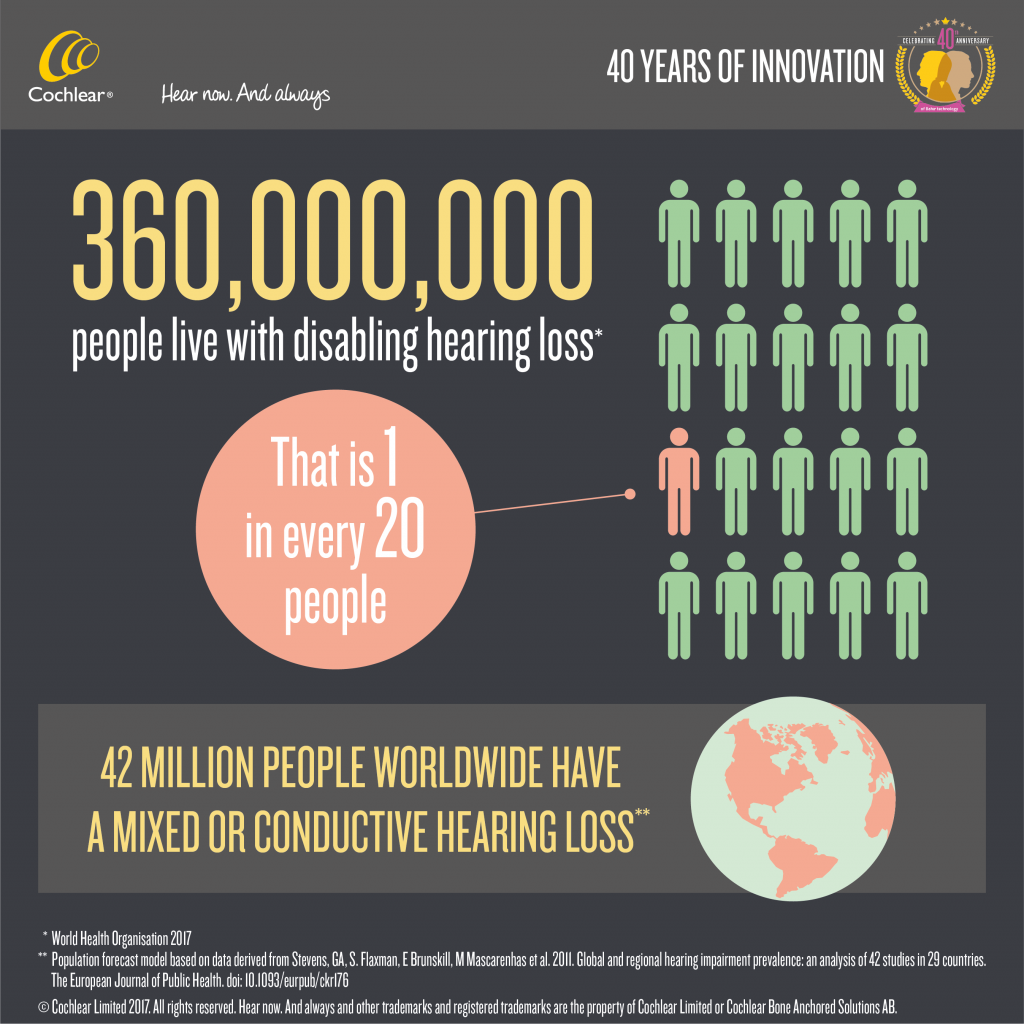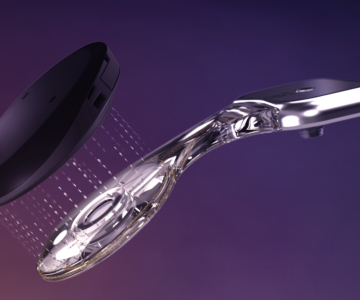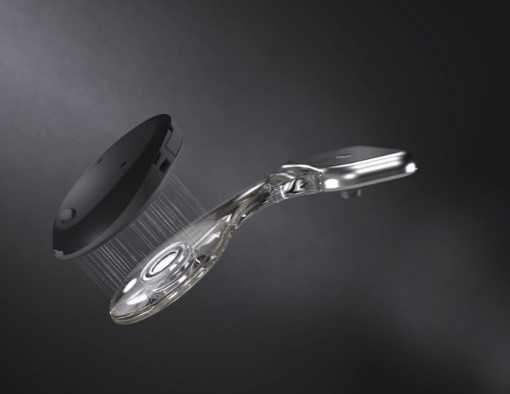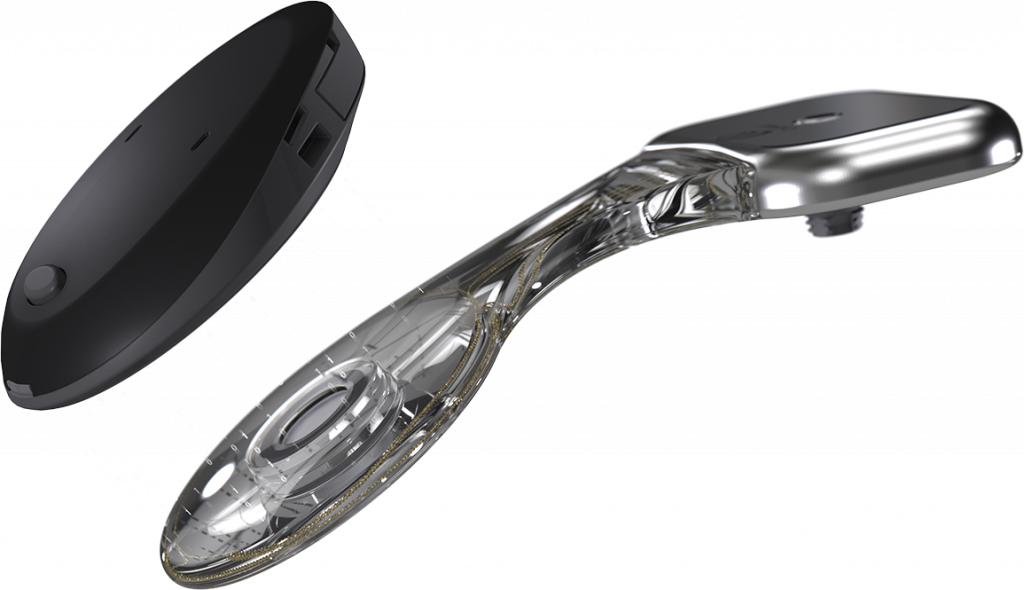By Natasha McDougald, Director, Acoustics Product Management and Marketing
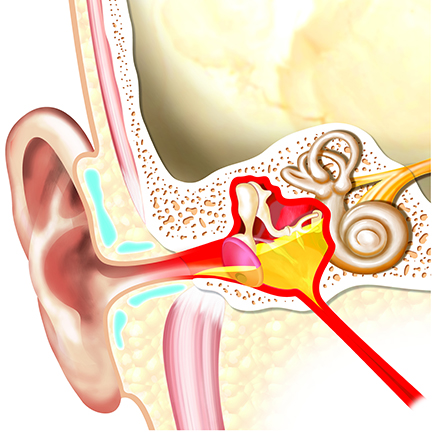
Chronic otitis media (COM) affects up to 330 million people across the globe and an estimated 200 million of these have a disabling hearing loss* that requires treatment.¹ The World Health Organization estimates that chronic otitis media may contribute to more than half of the global burden of hearing impairment.2 It’s clear that COM and related hearing loss are global issues. Patients here in North America are also directly impacted and can suffer degradation to their comfort and quality of life as a result.
Bone conduction systems can provide COM patients with effective and stable hearing improvement during standard disease treatment, making the case that bone conduction solutions may be the ideal supplement to treat hearing loss.3,4,5
“Given the need to provide adequate treatment options that address the hearing loss component of chronic otitis media, Cochlear™ bone conduction solutions offer treating clinicians and patients suffering from COM a hearing loss treatment option that has potential for good outcomes and patient satisfaction especially in cases of hearing loss where there is a 30dB or greater air-bone gap.”
– George Cire, Au.D Clinical Technical Project Manager at Cochlear
Treating chronic otitis media disease and hearing loss together
It’s important to focus on treating the disease to give your patients a safe, dry and healthy ear. It’s also crucial to consider that COM-related hearing loss can also impact a patient’s quality of life. Hearing rehabilitation can be accomplished through multiple means, including reconstructive middle ear surgeries; however, multiple factors influence the final postoperative hearing result, and the most important determinant of long-term hearing outcomes is the environment of the middle ear.6 We know that 29% of patients can have a conductive hearing loss of > 20 dB after tympanoplasty7 and these patients may require an additional hearing intervention as part of their treatment. Additionally, during the treatment pathway for COM, many patients may not have access to reliable hearing while waiting for an upcoming surgery or treatment.
Cochlear bone conduction solutions can improve your patients’ quality of life
Bone conduction systems are a safe, reliable and effective treatment for COM-related hearing loss.3 Patients with COM that require additional hearing intervention or amplification to obtain reliable hearing can experience a significant improvement in their quality of life after bone conduction solution.5In addition to improving hearing, the Cochlear™ Osia® System and Cochlear Baha® Systemkeep the ear canal open, unlike hearing aids, which can reduce the frequency of chronic ear infections.8,9
“Patients who have chronic otitis media tend to benefit [from bone conduction solutions] rather than wearing a traditional hearing aid.”
– Kristan Alfonso, MD Children’s Healthcare of Atlanta
You can also consider bone conduction as a hearing intervention earlier in the treatment pathway with the non-surgical Baha Start, which gives patients access to reliable hearing during the treatment pathway between surgeries.
Click here to find out more about Cochlear Bone Conduction Solutions.
References:
- World Health Organization. Chronic suppurative otitis media: burden of illness and management options. 2004; https://apps.who.int/iris/handle/10665/42941. Accessed January 16 2020.
- Acuin J and the Department of Child and Adolescent Health and Development, and the Team for Prevention of Blindness and Deafness of the World Health Organization. World Health Organization, Geneva; 2004.
- Gillett D, Fairley JW, Chandrashaker TS, Bean A, Gonzalez J. Bone-anchored hearing aids: results of the first eight years of a programme in a district general hospital, assessed by the Glasgow benefit inventory. J Laryngol Otol. 2006;120(7):537-542.
- Watson GJ, Silva S, Lawless T, Harling JL, Sheehan PZ. Bone anchored hearing aids: a preliminary assessment of the impact on outpatients and cost when rehabilitating hearing in chronic suppurative otitis media. Clin otolaryngol. 2008;33(4):338-342.
- McLarnon CM, Davison T, Johnson IJ. Bone-anchored hearing aid: comparison of benefit by patient subgroups. The Laryngoscope. 2004;114(5):942-944.
- Dornhoffer J and Walker D. Ossicular reconstruction. ENT & Audiology News2020;29(1).
- Lewis A, . Vanaelst, B. Hua, H. Choi, B. Hol, M. Jaramillo, R. Kong, K. Ray, J. Thakar, A. Järbrink, J. Success rates in restoring hearing loss in patients with chronic otitis media: a systematic review. Eur Arch Oto-Rhino-L. 2020:Submitted manuscript. Funded by Cochlear Bone Anchored Solutions AB.
- Medical Advisory Secretariat (2002). Bone anchored hearing aid: an evidence-based analysis. Ontario health technology assessment series, 2(3), 1–47.
- Macnamara M, Phillips D, Proops DW. The bone anchored hearing aid (BAHA) in chronic suppurative otitis media (CSOM). J Laryngol Otol Suppl. 1996;21:38-40. doi: 10.1017/s0022215100136254. PMID: 9015447.
*Disabling hearing loss refers to hearing loss greater than 40 dB in the better hearing ear in adults (15 years or older) and greater than 30 dB in the better hearing ear in children (0 to 14 years).



